Abstract
The accumulation of arginine in leaves of four citrus rootstock cultivars during P deficiency has been demonstrated to be due to increased de novo synthesis rather than decreased catabolism or increased protein degradation (E Rabe, CJ Lovatt, 1984, Plant Physiol 76: 747-752). In this report, we provide evidence (a) that the increased activity of the arginine biosynthetic pathway observed for citrus rootstocks grown under P-deficient conditions for 7 months is due to an increase in the concentration of ammonia in leaves of P-deficient plants and (b) that ammonia accumulation and removal through arginine systhesis are early responses to phosphorus deficiency for both a woody perennial, rough lemon (Citrus limon), and an herbaceous annual, summer squash (Cucurbita pepo). Transferring 5-day-old squash plants to a phosphorus-deficient nutrient solution for only 10 days resulted in a 2-fold increase in the concentration of nitrate in the youngest fully expanded leaves (YFE). Concomitantly, the specific activity of nitrate reductase doubled and the ammonia content of P-deficient YFE leaves increased to a concentration significantly greater that of leaves from healthy control plants (P < 0.05). Consistent with increased availability of ammonia, the incorporation of NaH14CO3 into arginine plus urea doubled during phosphorus deficiency and arginine accumulated. Despite the accumulation of nitrate and ammonia in YFE leaves during phosphorus deficiency, the total nitrogen content of these leaves was less than that of the healthy control plants. Similar results were obtained for rough lemon. Nitrate content of the YFE leaves increased 1.5- and 3.0-fold in plants deprived of phosphorus for 6 and 12 weeks, respectively. Ammonia content of the leaves increased as P deficiency progressed to 1.4 ± 0.08 mg (± se, n = 4) per gram dry weight, a level 1.8-fold greater than that of the P-sufficient control plants. During P deficiency de novo arginine biosynthesis in rough lemon increased 10-fold. Immersing the petiole of YFE leaves from P-sufficient squash and rough lemon plants in 50 millimolar NH4+ for 3 hours resulted in the accumulation of ammonia in the leaves, and a 4-fold increase in the incorporation of NaH14CO3 into arginine plus urea. Taken together, these results provide strong evidence that the accumulation of nitrate and ammonia in leaves is an early response of both woody and herbaceous plants to P deprivation. The data are consistent with the hypothesis that increased de novo arginine biosynthesis in leaves during P deficiency is in response to ammonia content of the leaves.
Full text
PDF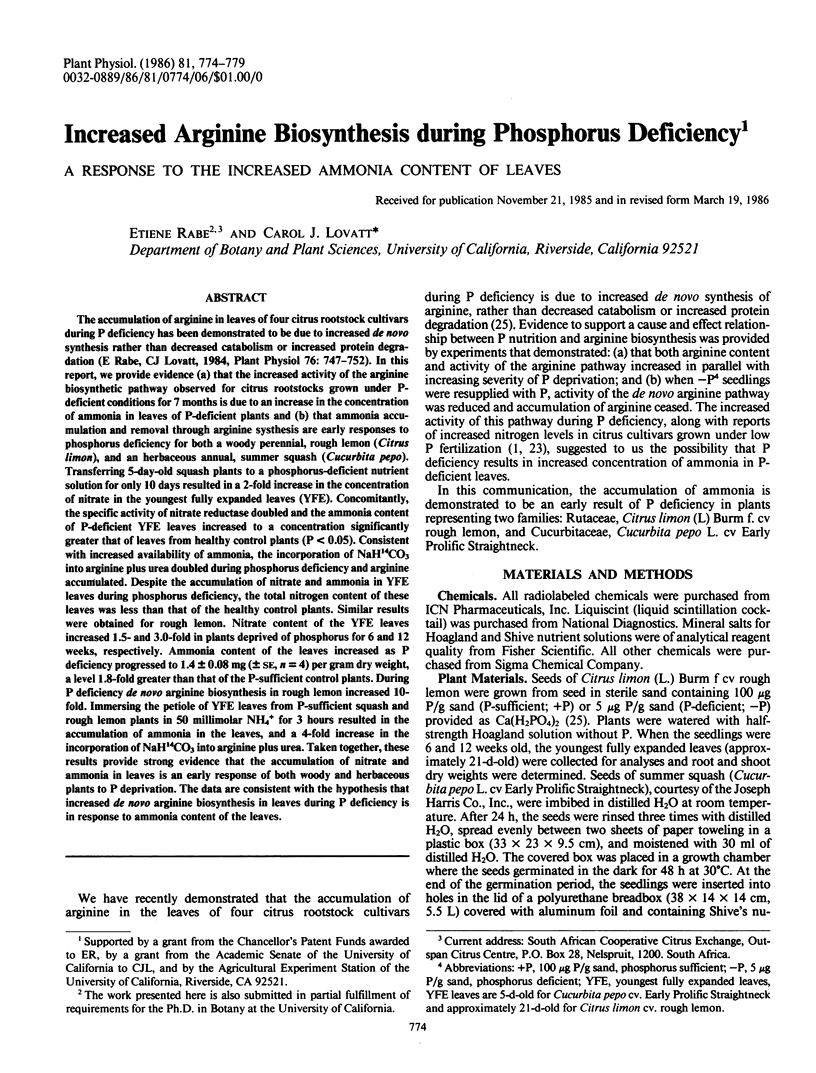
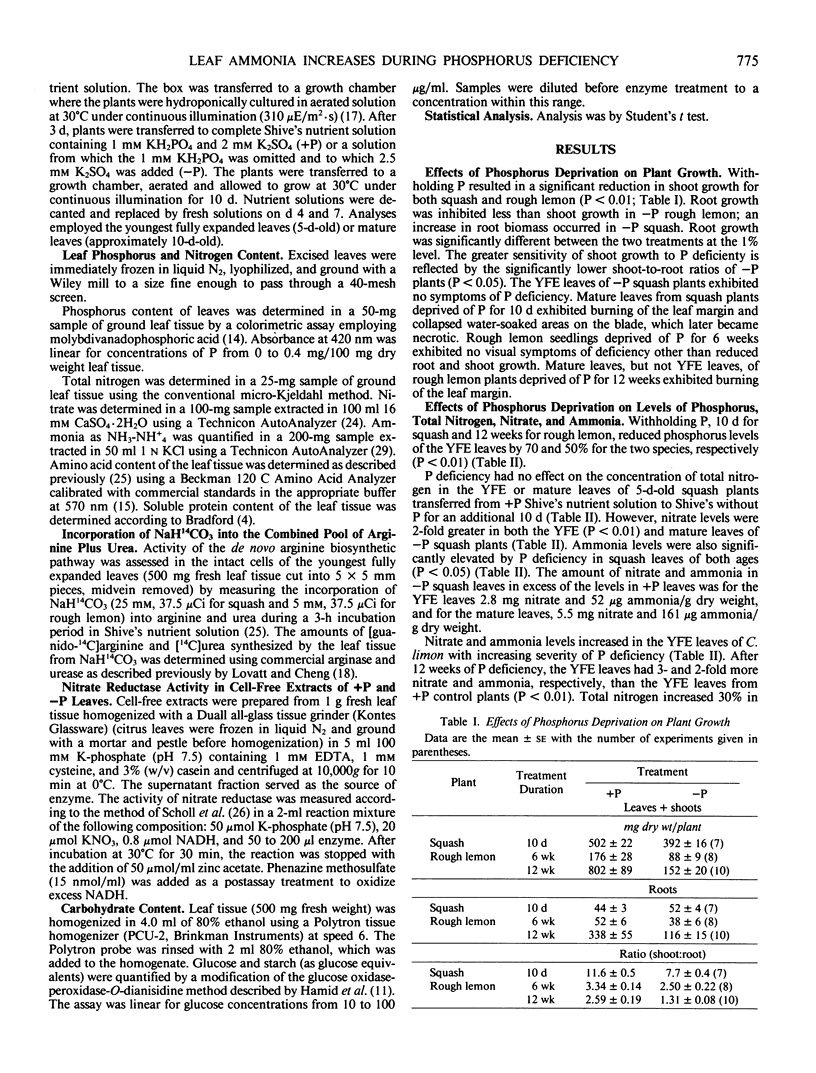
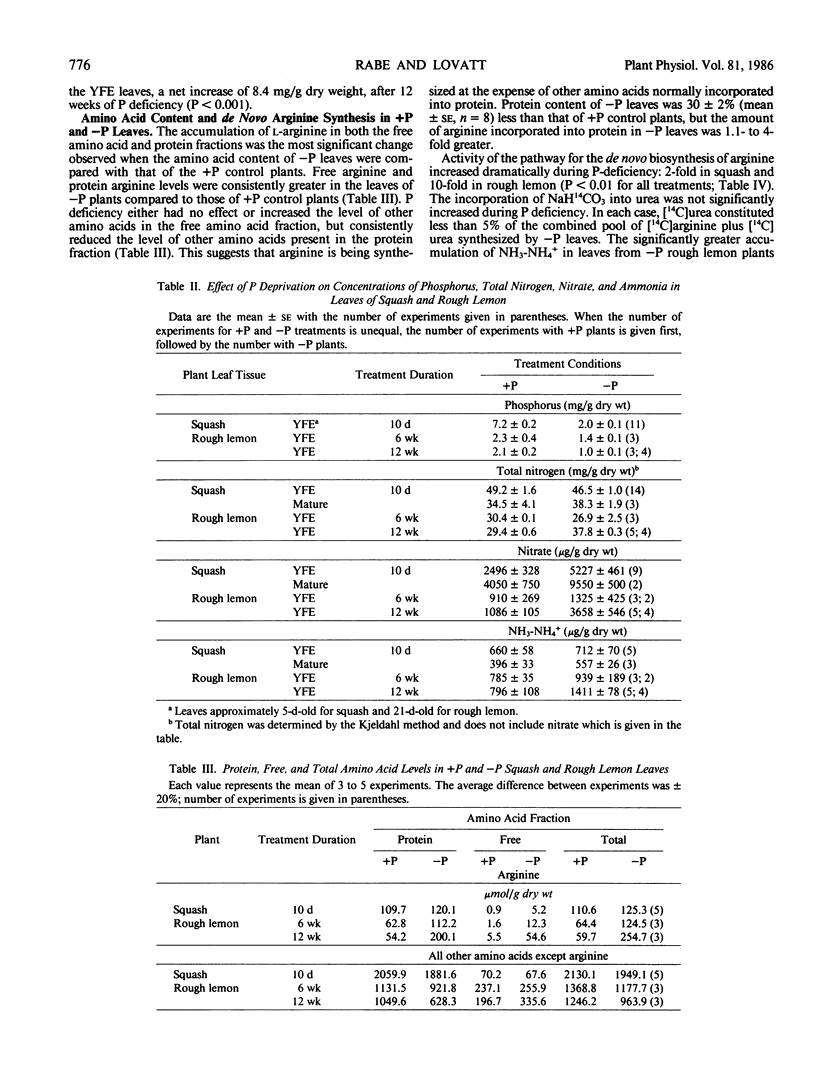
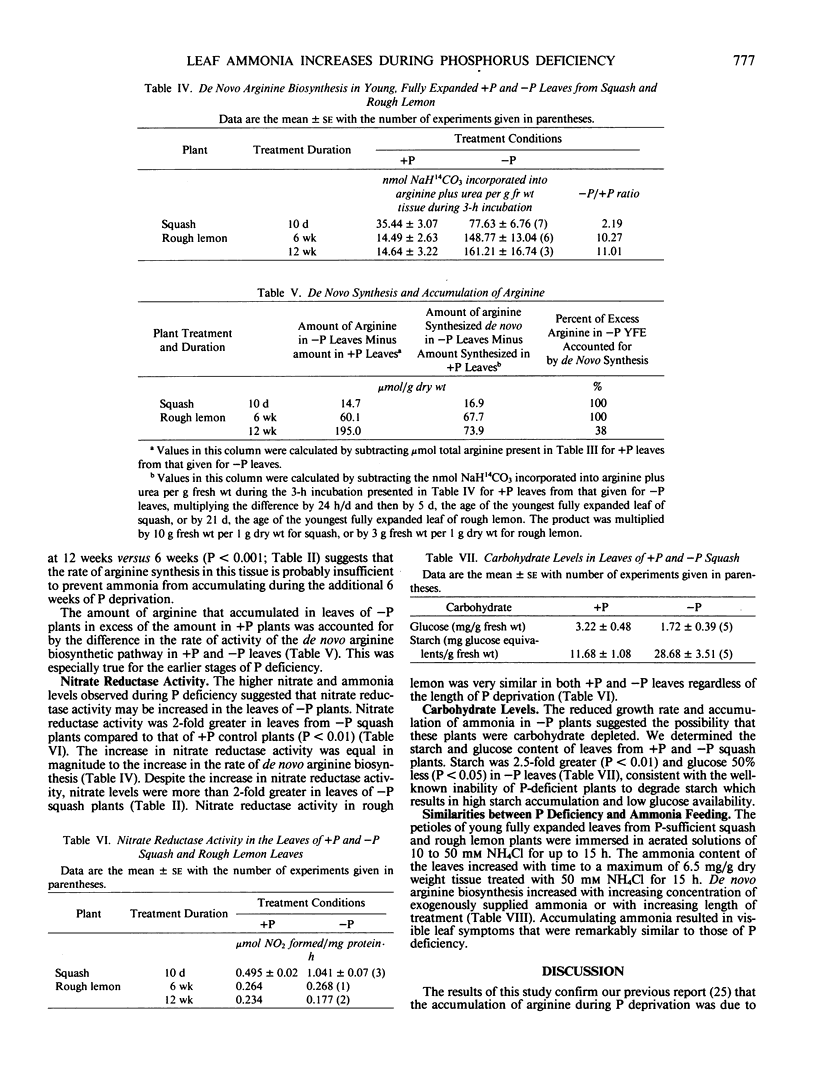
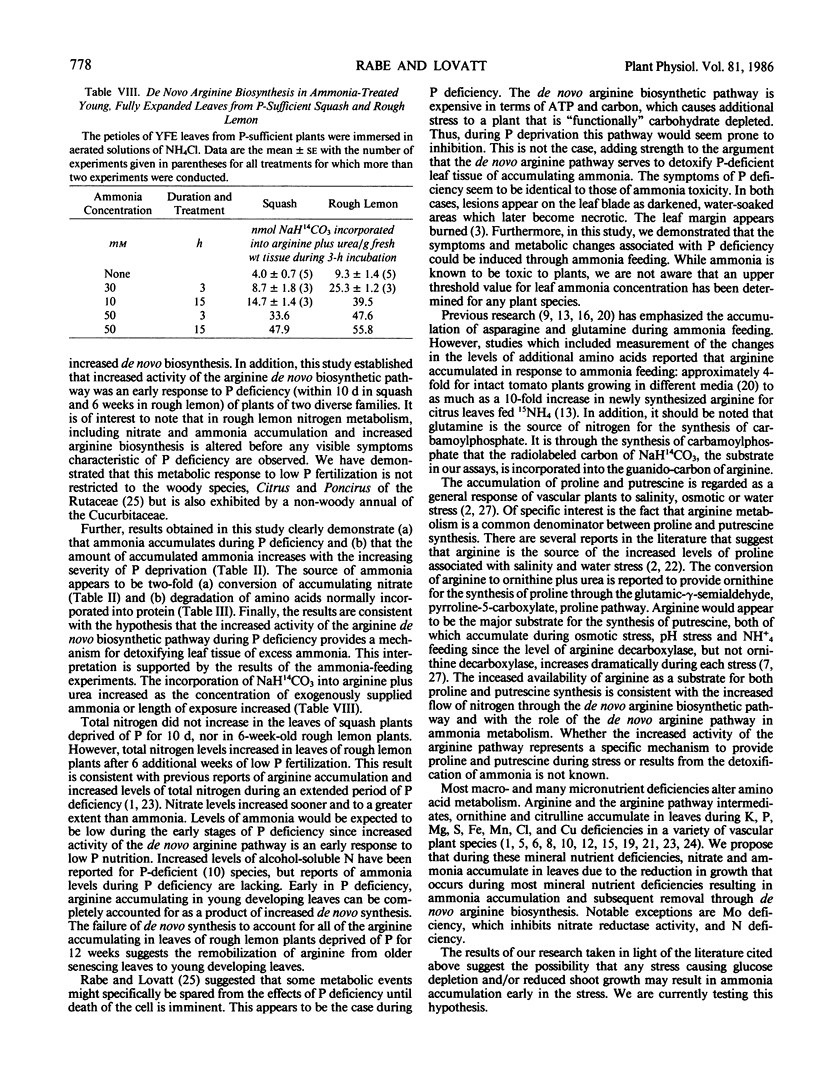
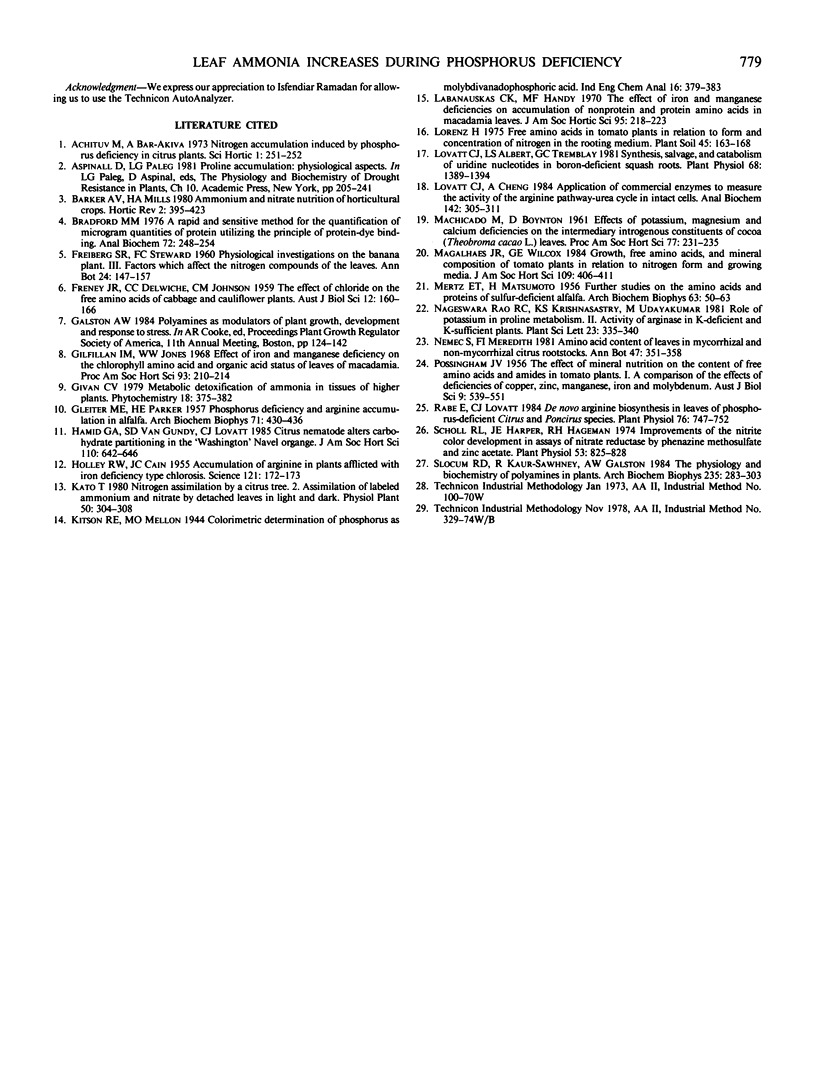
Selected References
These references are in PubMed. This may not be the complete list of references from this article.
- Bradford M. M. A rapid and sensitive method for the quantitation of microgram quantities of protein utilizing the principle of protein-dye binding. Anal Biochem. 1976 May 7;72:248–254. doi: 10.1016/0003-2697(76)90527-3. [DOI] [PubMed] [Google Scholar]
- GLEITER M. E., PARKER H. E. The effect of phosphorus deficiency on the free amino acids of alfalfa. Arch Biochem Biophys. 1957 Oct;71(2):430–436. doi: 10.1016/0003-9861(57)90054-1. [DOI] [PubMed] [Google Scholar]
- HOLLEY R. W., CAIN J. C. Accumulation of arginine in plants afflicted with iron-deficiency type chlorosis. Science. 1955 Feb 4;121(3136):172–173. doi: 10.1126/science.121.3136.172. [DOI] [PubMed] [Google Scholar]
- Lovatt C. J., Albert L. S., Tremblay G. C. Synthesis, salvage, and catabolism of uridine nucleotides in boron-deficient squash roots. Plant Physiol. 1981 Dec;68(6):1389–1394. doi: 10.1104/pp.68.6.1389. [DOI] [PMC free article] [PubMed] [Google Scholar]
- Lovatt C. J., Cheng A. H. Application of commercial enzymes to measure the activity of the arginine pathway-urea cycle in intact cells. Anal Biochem. 1984 Nov 1;142(2):305–311. doi: 10.1016/0003-2697(84)90469-x. [DOI] [PubMed] [Google Scholar]
- Rabe E., Lovatt C. J. De novo arginine biosynthesis in leaves of phosphorus-deficient citrus and poncirus species. Plant Physiol. 1984 Nov;76(3):747–752. doi: 10.1104/pp.76.3.747. [DOI] [PMC free article] [PubMed] [Google Scholar]
- Scholl R. L., Harper J. E., Hageman R. H. Improvements of the nitrite color development in assays of nitrate reductase by phenazine methosulfate and zinc acetate. Plant Physiol. 1974 Jun;53(6):825–828. doi: 10.1104/pp.53.6.825. [DOI] [PMC free article] [PubMed] [Google Scholar]
- Slocum R. D., Kaur-Sawhney R., Galston A. W. The physiology and biochemistry of polyamines in plants. Arch Biochem Biophys. 1984 Dec;235(2):283–303. doi: 10.1016/0003-9861(84)90201-7. [DOI] [PubMed] [Google Scholar]


